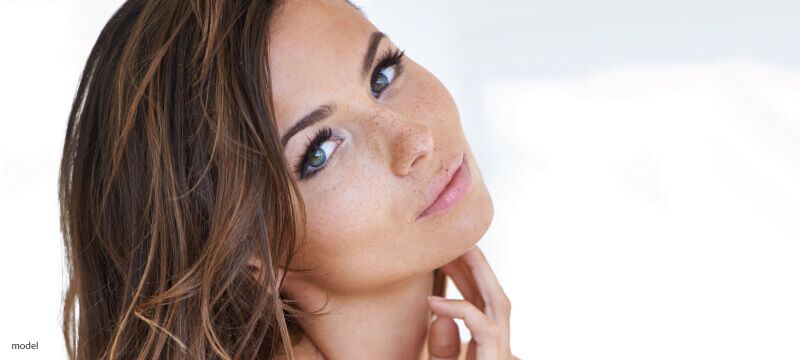Chemical Peels: What To Expect Before, During, and After Treatment

Chemical peels are one of today’s most popular minimally invasive skin rejuvenation treatments. Peels can be fully customized for the needs of each patient; there are peels to trigger collagen production, clear acne/blemishes, address pigmentation issues (even the skin tone), and smooth even the roughest of skin.
If you’re considering a chemical peel, here’s everything you can expect before, during, and after treatment.
What is a Chemical Peel?
A chemical peel is a skin resurfacing treatment which uses a liquid acidic solution to exfoliate the top layers of skin. Chemical peels may be light and superficial, or can go deeper, depending on the type of formula used.
Chemical peels commonly involve glycolic acid, salicylic acid, lactic acid or retinoic acid. These same ingredients are in many of your favorite skin care products. During a chemical peel treatment, stronger solutions are used.
What Skin Conditions Can a Peel Treat?
Chemical peels result in improved skin texture and tone. They result in smoother, tighter, more glowing and youthful skin. Chemical peels are typically optimized to treat one or more of the following conditions:
- Fine lines and wrinkles
- Acne, scarring or other blemishes
- Hyperpigmentation
- Excessive sebum production
While often performed on the face, chemical peels can also be done on the neck, chest or hands.
How Is a Chemical Peel Performed?
Depending on your skin’s sensitivity and your desired results, there are many options for your chemical peel, each of which penetrates to a different depth. You and your provider will decide which is best for you during your consultation.
A professional chemical peel (in contrast to a less powerful at-home peel) is performed in-office, and you’ll return home the same day. During your peel, you’ll lie face up with your eyes protected. A neutral gel or protectant may be applied around your eyes and lips to keep chemicals from reaching those areas.
If you’ve selected a deep peel, you may be given some relaxing pain medication prior to the procedure.
The liquid peel is then applied to your face using a brush, cotton applicator or spatula. Areas with the thickest skin, such as the forehead, nose, cheeks and chin are addressed first, then the liquid is spread to additional areas.
When the treatment is complete, a cool or neutralizing wash may be used to clean the peeling agent from your skin.
Preparing for Your Chemical Peel
In preparation for your chemical peel, your provider will give you a list of recommended dos and don’ts. Following these preparatory steps helps thin the top layer of skin, allowing your chemical peel to penetrate more deeply for enhanced results. These tips also reduce risk of scarring or hyperpigmentation.
Your provider’s suggestions will likely include the following:
- Avoid Sun Exposure
Within 10 days of your peel, avoid sun exposure whenever possible and use sunscreen daily. This will help reduce risk of discoloration.
- Avoid Waxing
Refrain from facial waxing, electrolysis or other depilatories in the week leading up to your treatment.
- Avoid Excess Exfoliation
Stop the use of prescription acne medications, retinol products such as Retin-A, and strong AHA or BHA products at least 7 days prior to your chemical peel.
- Avoid Aspirin & Advil
Refrain from taking aspirin or other non-steroidal anti-inflammatories such as Advil the week prior to your peel.
- Hydrate
In the week leading up to your peel, drink plenty of water and stop using any products not mentioned above that cause your skin to dry
- 24-Hours Prior
Avoid going to the gym or excessively sweating in the 24-72 hours prior to your appointment.
What to Expect During Your Peel
A chemical peel is not as relaxing as a facial, but it offers better and longer-lasting results. During your peel, you may experience the following sensations:
- Tingling
Sensations of tingling and itching are completely normal during your peel.
- Tightness
It’s normal to feel as though your skin is tightening or being slightly pulled.
- Temperature Changes
Your skin may feel like it’s warming or cooling. People react to peels in different ways, but both sensations are normal.
If at any point, the sensation becomes too uncomfortable, communicate this to your provider.
What to Expect After Your Peel
A chemical peel damages skin in a controlled manner to initiate skin cell turnover. Because of this, chemical peels involve a recovery process. You can expect the following during this time:
- Your skin may be red or discolored a few days after your peel, especially if you have a light complexion.
- Small whiteheads may develop – but this is not a breakout. Let them be and it will resolve on its own.
- Flaking, peeling or shedding may occur, generally 3 days after your procedure. Let it be to avoid risk of permanent hyperpigmentation.
- Your skin may feel dry or tight. This is normal and will pass on its own.
At any point, if you feel your redness is increasing or your skin is crusting over, contact your doctor. To avoid complications and hasten the healing process, keep the following tips in mind:
Keep Skin Clean and Cool For 24-48 Hours After Treatment
Keep skin clean by avoiding makeup. Avoid raising your temperature with activities such as exercise, sweating, steam rooms or saunas. Keep hair dryers away from your face, and refrain from drinking alcohol.
No Manual Exfoliation
Until your skin heals, avoid touching your face, peeling or picking at loose skin, or attempting to exfoliate with scrubs, loofahs or towels. Doing so can lead to permanent skin discoloration.
No Chemical Exfoliation
As your skin recovers, continue to refrain from using prescription acne medications, retinols, retinoids, or hydroxy acids acidic for at least 10 days.
Moisturize with Care
Avoid applying ice or cold water to your face. Instead, keep skin moisturized. Your provider can recommend a moisturizer to use for post-treatment. Use it twice daily or more, as needed.
Avoid Depilatories
Refrain from waxing, electrolysis or other forms of hair removal in the treatment area for at least 10 days.
Use Sunscreen
Continue to avoid direct sun exposure until your skin has fully healed. Wear sunscreen and protective clothing when you go outdoors.
Avoid Additional Treatments
In addition to the above, do not have another chemical peel until your doctor tells you it is safe to do so.
How Long Do Peel Results Last?
How long your peel lasts will depend on the strength of your chemical peel, the specific formula used and your adherence to pre and post treatment instructions. The following are general guidelines:
Superficial Peels: These gentle peels commonly use salicylic acid or glycolic acid and address only the outermost layers of the skin. They require no down time. These peels may last between 1-2 months.
Medium Depth Peels: These peels may use trichloroacetic acid among other formulas and penetrate more deeply into the skin for the removal of lines or discoloration. Results last between 2-6 months.
Deep Peels: Performed under the guidance of a doctor, these peels use strong acids to remove deeper lines and improve skin’s tautness. Results of a deep chemical peel may last for years.
How To Make Chemical Peel Results Last Longer
Outside of a superficial peel, chemical peels require pre-planning and down-time after the procedure. Extending the longevity of your results makes the time you commit more worthwhile. For longer-lasting chemical peel results, do the following:
Follow Instructions
Follow all your pre and post-treatment instructions closely. Give your skin time to fully heal, and above all – avoid touching your face while your skin is healing.
Keep Skin Hydrated
Hydrating your skin is always important, but even more so after your peel. Use your moisturizer multiple times per day if needed.
Avoid the Sun
Sun exposure ages your skin, even after your chemical peel. Maintain your results for longer by using sunscreen daily.
Disclaimer: The contents of the Westlake Dermatology website, including text, graphics, and images, are for informational purposes only and are not intended to substitute for direct medical advice from your physician or other qualified professional.

What SPF level should be in order to give sufficient skin protection? 15, 30 or 50?
Hi Regina,
Post chemical peel, you definitely want to use a high SPF sunscreen We’d recommend a minimum of SPF 30, but the higher the better. You’ll also want to avoid the sun as well, avoiding the outdoors during peak UV times and wearing a sun hat.
Thanks,
WD Staff
Great post! I can cosign all all the info. Our patients are having great results using peels to address sun damaged skin with dark spots and freckles.
Do you recommend chemical peels for the body?
Hi Raven,
Some providers do offer body peels for areas like the arms, legs, chest, and stomach. These peels are often more concentrated and thus powerful compared to facial peels.
Body peels can be used to correct dryness, rough patches, uneven skin, wrinkles, and acne
We hope that helps!
WD Staff
It was helpful when you said to avoid taking anti-inflammatories a week before the appointment. Thanks for that